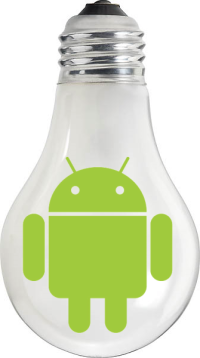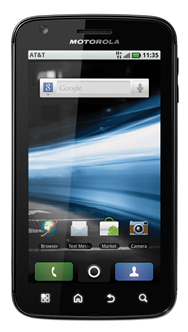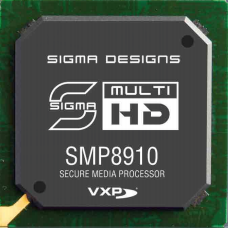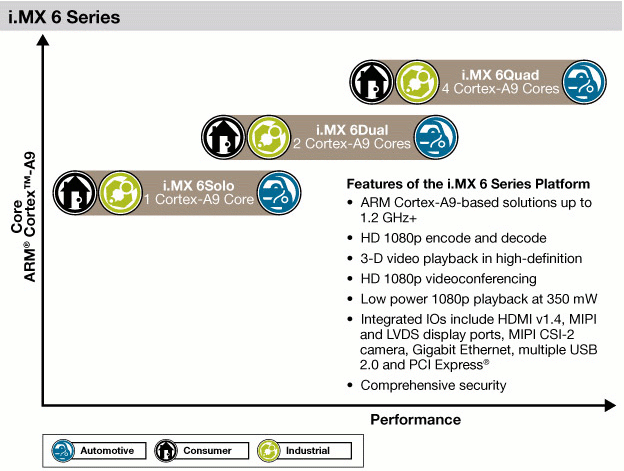Seco, an Italian company, specialized in Embedded Systems development has developed a light bulb with a pico projector (DLP) that replaces your light bulb and project videos/pictures or anything you can think of on your wall. The product is supposedly 99% made with Texas Instruments chipsets, mainly Texas Instruments OMAP3530 processor (ARM Cortex A8) and it runs Android, WiFi, Bluetooth, inside a lamp. The maximum power consumption is 25 W (green bulb maximum power consumption). This is currently a prototype and could cost between 200 and 400 USD retail. A microphone and speaker is also available, so it could possibly be used with Skype. Have a look this really seems promising. Soon we may also ask: “What OS are you running in your light bulb ?” Jean-Luc Aufranc (CNXSoft)Jean-Luc started CNX Software in 2010 as a part-time endeavor, before quitting his job as a software engineering manager, and starting to […]
Motorola Atrix 4G: A mobile turns into a Laptop
Motorola showcased the Atrix 4g smartphone based on NVidia Tegra 2 and running Android 2.2 (upgradable to Android 2.3 gingerbread later in 2011). It can be plugged directly into an ultra-thin laptop chassis (Laptop Dock for Motorola Atrix 4G). Motorola calls that a WebTop. The dock itself has a resolution of 1366×768 but the phone can support up to 1280×1024 in Desktop Mode. Contrary to Lenovo LePad, where the dock has an Intel iCore processor, all processor is done by the smartphone. Once in the dock you’ll be able to use the keyboard and mouse to check your emails (Gmail), play videos (720p supported, but 480p is recommended for smoothness), send SMS, browse the web with Mozilla Firefox (Add-ons are also supported) and more. The smartphone has a Citrix receiver so it can run Windows XP/Vista/7 thru the Citrix server (Virtual Machine). It also is capable of docking directly into […]
Sigma Designs unveils its SMP8910 Series Secure Media Processors: SMP8910 SMP8911
Sigma Designs will announce its latest and all powerful Media Processor (SMP8910) based on MIPS at CES 2011. The SMP8910 with integrated studio-quality VXP® video processing provides a highly-integrated, high-performance solution for premium Blu-ray 3D players. It supports all the audio decoding options, video decoding options, and content protection requirements for Blu-ray players. The Secure Media Processor architecture offers advanced content protection, supporting a wide variety of Digital Rights Management (DRM) and Conditional Access (CA) solutions. Studio-quality VXP® video processing is included, offering fully adaptive deinterlacing, adaptive 3D noise reduction, mosquito noise reduction, block artifact reduction, adaptive detail enhancement featuring sharpness and texture enhancement with overshoot control, adaptive debanding, and adaptive contrast enhancement. 3D Video decoding of a variety of 3D Video formats is also featured, including Blu-ray 3D. Support for legacy, current, and future 3DTVs is provided by supporting a variety of 3D Video output formats. The high-performance 3D […]
The Next Version Microsoft Windows Will Support Embedded Systems based on Intel and ARM
Microsoft announced its new Windows operating system will support SoC based on ARM and is mainly working with NVidia (Tegra Processors), Qualcomm and Texas Instruments. This should allow their customers to provide a wider range of tablets running Windows OS. They will also keep working with AMD and Intel on their low power x86 processors. Here’s an excerpt of the press release: LAS VEGAS — Jan. 5, 2011 — Microsoft Corp. today announced at 2011 International CES that the next version of Windows will support System on a Chip (SoC) architectures, including ARM-based systems from partners NVIDIA Corp., Qualcomm Inc. and Texas Instruments Inc. On the x86 architecture, Intel Corporation and AMD continue their work on low-power SoC designs that fully support Windows, including support for native x86 applications. SoC architectures will fuel significant innovation across the hardware spectrum when coupled with the depth and breadth of the Windows platform. […]
Android 3.0 (Honeycomb) Video Preview
A preview of Android 3.0 (Honeycomb), the new Android OS optimized for larger screen size devices particularly tablets, is now available. It really looks great, with eBook reading, Gmail, YouTube, Google talk (with video) applications redesigned for tablets. Jean-Luc Aufranc (CNXSoft)Jean-Luc started CNX Software in 2010 as a part-time endeavor, before quitting his job as a software engineering manager, and starting to write daily news, and reviews full time later in 2011. www.cnx-software.com
Lenovo LePad Android Qualcomm SnapDragon Tablet with Intel iCore Dock
CES has just started and Leveno showcased their new Android 2.2 tablet (Lenovo LePad) based on Qualcomm Snapdragon (MSM8x60?) @ 1.3GHz with 1GB RAM, a 10.1″ Capacitive touchscreen (1280×800). Currently on the Wifi version is available, but a 3G/GPS version will be available later this year. The Wifi version will start to sell this month for around 500 USD in China. They use their own UI called “Four Square” on top of Android, the same currently on their phones (LePhone). Lenovo also innovated by providing a dock for their tablet. Once you connect the tablet to the dock TaDa! it becomes a laptop based on Intel iCore 5 running Windows 7. The Intel dock will cost 800 USD. They can then switch back on forth between Android 2.2 and Windows 7 in less than a second. A new version of the LePad (new hardware) will also be provided later this […]
Freescale announces i.MX6 ARM Cortex A9 Multi-core Processor
Right before CES 2011, Freescale announced i.MX6 series, its latest multi-core Cortex A9 processor aimed at smartphones, tablets, eReaders and other consumer electronics equipment. Here’s an excerpt of the press release: Freescale delivers dramatic performance advances for tablet, smartphone, eReader, automotive infotainment and other hot consumer marketsCompatible i.MX 6 series scales from one to four cores and raises the bar with a new portfolio of high-performance, low-power multicore processors AUSTIN, Texas – Jan. 3, 2011 – Freescale Semiconductor introduces the i.MX 6 series of quad-, dual- and single-core applications processors designed to deliver outstanding performance and scalability to manufacturers targeting the hottest selling smart mobile, automotive infotainment and embedded device categories. Integrating one, two or four ARM® Cortex™-A9 cores running at up to 1.2 GHz each, the i.MX 6 series delivers up to five times the performance of Freescale’s current generation of applications processors. This performance provides additional headroom for […]
Android App Inventor – Develop Android App Without Coding
[Update: Google phased out App Inventor, but made it open source. It is now hosted by MIT at http://appinventoredu.mit.edu/welcome-to-app-inventor-edu“] We have previously shown how to setup your environment to develop Android application using Eclipse. However, if you are not into Java programming and learning Android API but still want to develop (simple) Android applications, that’s still possible thanks to App Inventor. App Inventor will allow you to create the application UI in your web browser (The Designer), configure how your application behaves via a Java JNLP (Java Network Launching Protocol) applet (The Block Editor) and run your application in your Android phone/tablet or if you don’t have hardware in an emulator (The emulator). For Windows XP + Emulator, all you’ll have to do is to follow the instructions in http://appinventor.googlelabs.com/learn/setup/setupwindows.html and then you’ll be able to create some “Hello Kitty” application. First download the installer. Run appinventor_setup_installer_v_1_1.exe to install the […]







